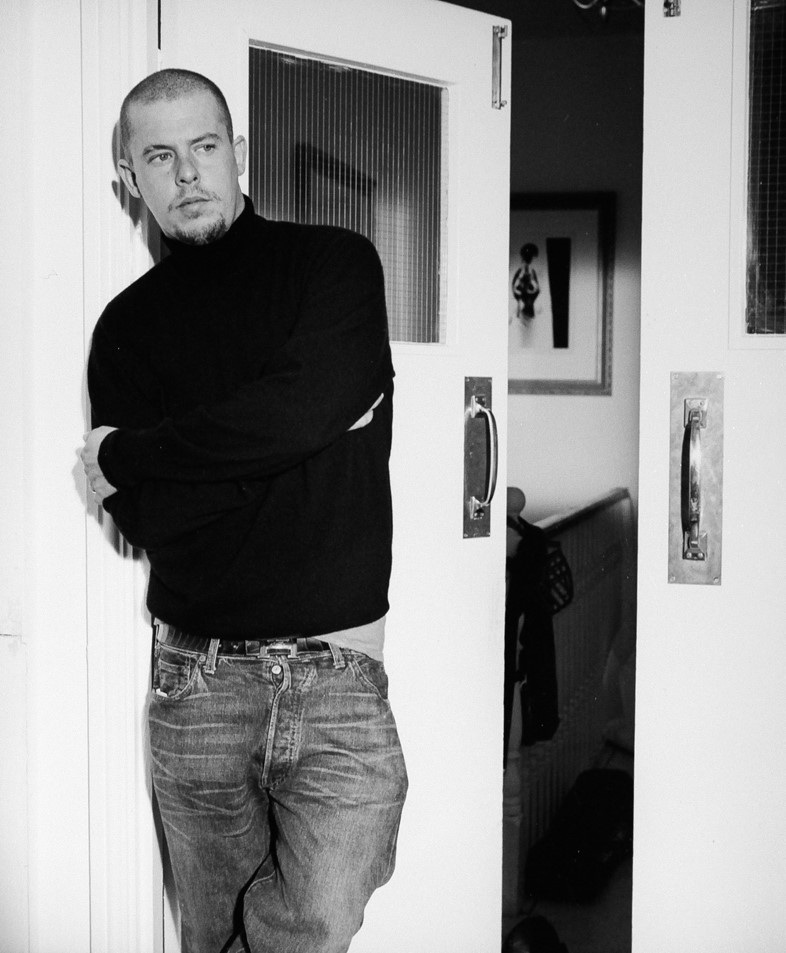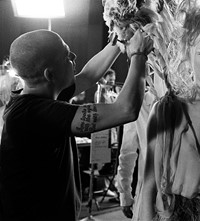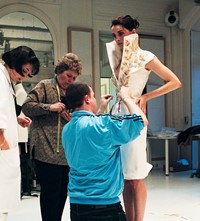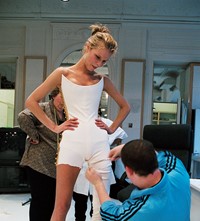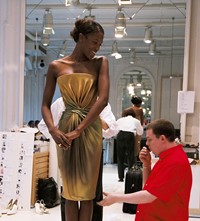The Inside Story of the New McQueen Documentary
Ahead of its release this Friday, the directors behind McQueen discuss the making of the film and the maverick designer’s incredible legacy
There was something fiercely punk and wildly poetic about VOSS, McQueen’s S/S01 fashion show where perplexed guests of honour looked on as bandage-clad models commandingly walked around a padded glass cell. The same would apply to his Givenchy days, which saw the pedestal-averse creative director break with tradition to have lunch with the seamstresses in the basement cafeteria. That’s the Alexander McQueen we’re introduced to in Ian Bonhôte and Peter Ettedgui’s very respectful upcoming documentary tribute, McQueen: staggeringly talented, innovative and down-to-heart but also tormented.
When Bonhôte and Ettedgui embarked on a mission to tell the late designer’s story, their interview requests with McQueen’s close guard (as well as the brand itself) were met with firm ‘nos’ across the board. Given the merciless posthumous treatment reserved to Lee by the tabloid press, their reluctance was not unfounded. So the directors set out to prove they wanted to celebrate the life of an exuberant talent gone far too soon. Bonhôte and Ettedgui (who wrote the Marlon Brando documentary, Listen To Me Marlon) proved well suited for such a mission, as total outsiders to the fashion industry establishment. “We approached it in this slightly punk way that, as we were looking through footage of McQueen’s early collections, was a huge inspiration to us,” remarks Ettedgui. “All the stuff McQueen did in those early days was without authorisation, without the help of the establishment in any way, shape or form.”
“We approached it in this slightly punk way that, as we were looking through footage of McQueen’s early collections, was a huge inspiration to us” – Peter Ettedgui
In the end, winning over the trust of McQueen’s inner circle may have been laborious, but it sure proved fruitful. Comprised of archival clips from nearly 200 sources, along with rarely seen runway show footage and revealing interviews with Lee’s eldest sister Janet, her son Gary (himself a designer who worked with Lee), assistant designer Sebastian Pons and Detmar Blow, widower of Lee’s greatest mentor Isabella Blow, McQueen serves as an intimate and invaluable historical document about the ambitious and revolutionary mind who thrust fashion well into the future before disappearing just as spectacularly as he’d appeared. Another Man reached out to co-directors Bonhôte and Ettedgui to find out what were some of their greatest takeaways from this deep dive into the intricately wrought world of Alexander McQueen.
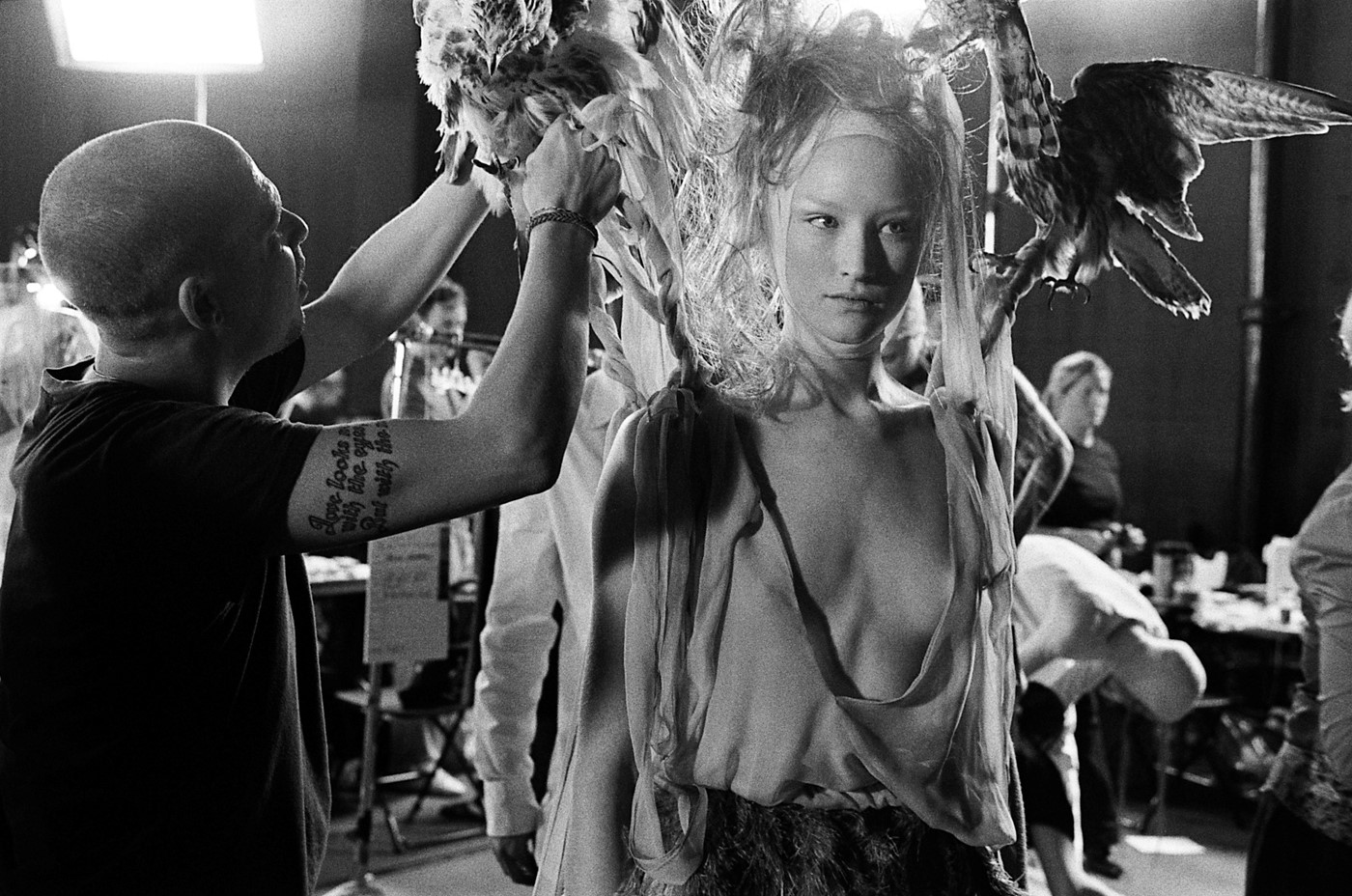
The London fashion scene was very beige pre-McQueen
Who would have thought an East London lad would be sending the world’s most sought-after models down a runway as it catches fire, or with live wolves on leashes, or as two robots shoot streams of paint all over their immaculate white dresses? (Supermodel Shalom Harlow got the privilege of enacting that last one.) As Ettedgui likes to put it, the London scene out of which Lee emerged – and Galliano a few years earlier – was very safe. “The punk era and the adventurousness of the early-to-mid 80s had slightly dissipated,” he explains. “It had become quite safe and cautious, not just in terms of high street, but also the higher-end boutiques. McQueen looked up to more maverick talents who were a few years ahead of him, whether it was Vivienne Westwood, Helmut Lang, Gaultier in Paris or Galliano – those were his forces of inspiration. But when he burst onto the scene, you have to put the shock tactics of his early shows in the context of a fashion world that was playing safe.”
“Sometimes, you can be attached to a project but it can take years before it comes to fruition. With McQueen, we pushed it through very quickly and aggressively as everyone wanted to be a part of it” – Ian Bonhôte
The film world was hungry to tell Lee’s story
Bonhôte and Ettedgui break down McQueen’s dizzying trajectory into a five-act structure, honing in on some of most controversial and iconic shows in the maverick designer’s repertoire, starting with his 1992 Central Saint Martins collection, Jack the Ripper Stalks His Victims. The whirlwind ascent of this working-class London boy to the post of Givenchy creative director at 27 years old (not to mention a collaborator to the likes of Gaga, Björk, Bowie and Tim Burton) makes for quite the cinematic story. And it turns out producers and funders were also fully sold on the idea. “After talking with Peter, he wrote a script immediately, which we took to the Berlinale to get financing,” recalls Bonhôte. “This process happened really quickly. I think there was a desire within the film industry to have a film project about McQueen. Sometimes, you can be attached to a project but it can take years before it comes to fruition. With McQueen, we pushed it through very quickly and aggressively as everyone wanted to be a part of it.”
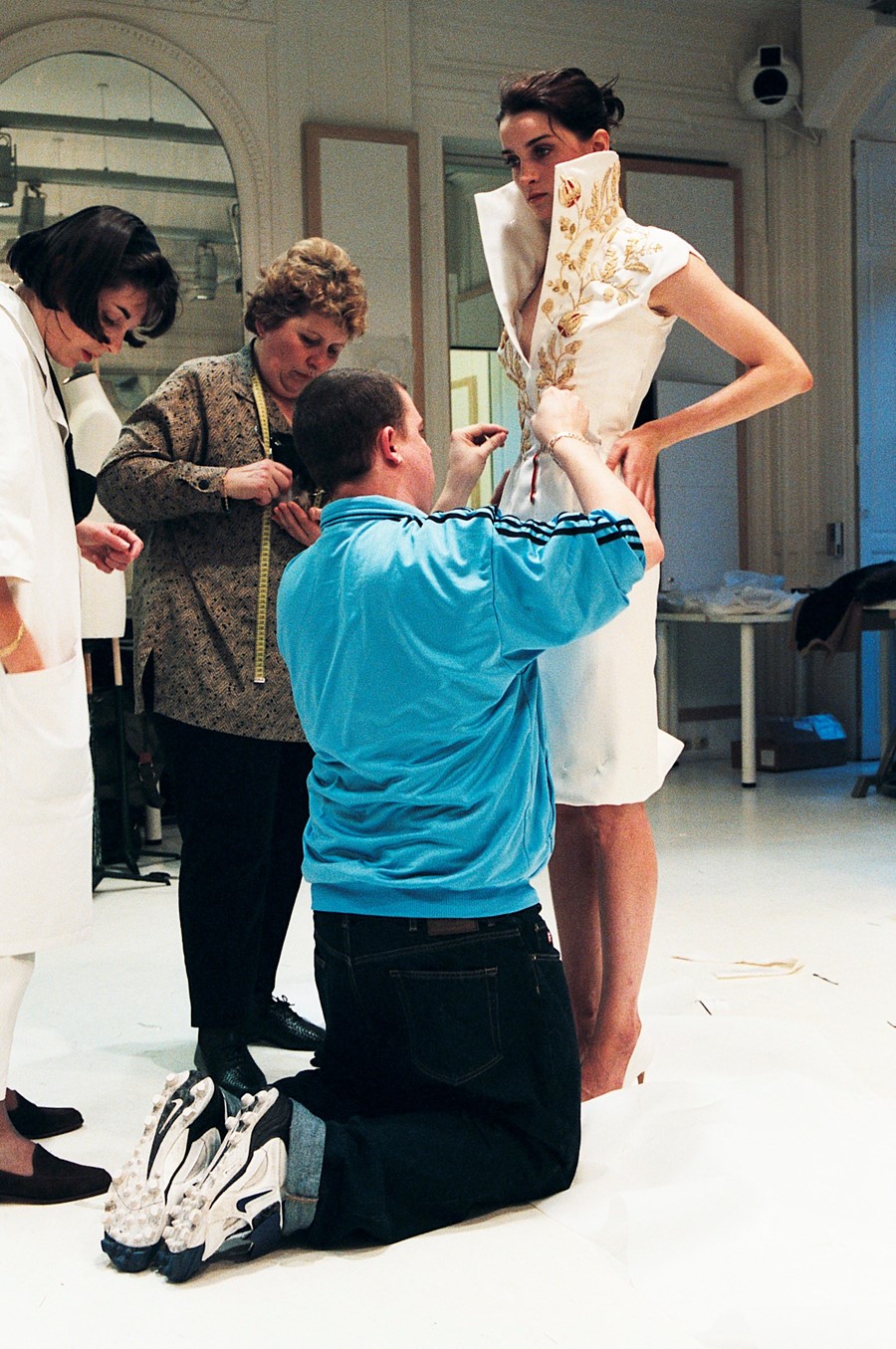
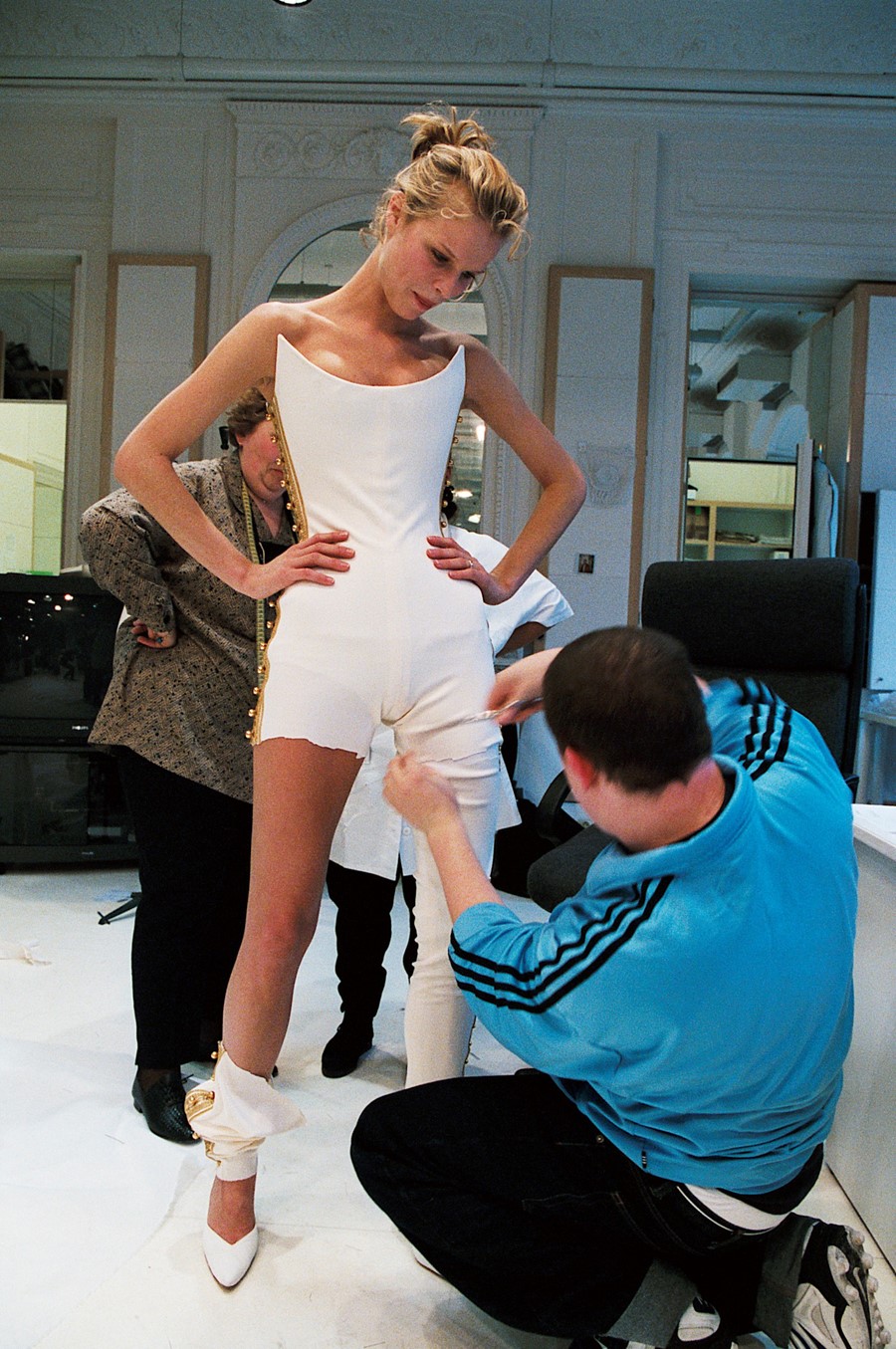
The fashion world must think about archiving for the sake of history
The filmmakers did their best to track down all existing McQueen footage, which proved challenging because many media outlets still haven’t digitised their archives. Ettedgui points to the case of Canadian reporter and host Jeanne Beker of FASHION Television, who “had a great relationship with McQueen, as he always seemed to enjoy being interviewed by her,” he sums up. “With other people’s archives, we’d see McQueen look incredibly bored. But whenever he’d see Jeanne, he’d scream her name out excitedly.” But when it came to securing the footage, owners Bell Media still hadn’t digitised any of it, making sifting through the archive very complicated. “Lee was asked in an interview what fashion meant to him, and he said, ‘change.’ People are always moving on to the next thing and few companies in the fashion business worry about their archive,” argues Ettedgui. “They don’t see value in it, because the value will be the next thing they’re going to do. So I hope this film can make people aware of the value and importance of those archives.”
“People are always moving on to the next thing and few companies in the fashion business worry about their archive. They don’t see value in it, because the value will be the next thing they’re going to do. So I hope this film can make people aware of the value and importance of those archives” – Peter Ettedgui
McQueen was always very vocal about empowering women
It sure feels like a cliché to emphasise a fashion designer’s love of women, but McQueen frequently and proudly declared that he didn’t dress women for their husbands. This was the guy who blasted Sinéad O’Connor from his Walkman as he toiled away on his sewing machine, and whose most impactful professional relationship was none other than stylist Isabella “Issie” Blow, one of the very first people to champion his work. Simply put, he spoke to the core audience he made the clothes for, not to their husband’s pocketbooks. And as Ettedgui puts it, he championed the strong, independent female silhouette that wasn’t just seductive. “I remember Plum Sykes telling us that he had made her wedding dress, and she was expecting it to be very McQueen, with a bit of slashing and all the typical McQueen stuff. He told her, ‘no no, this is your wedding day. It has to be romantic.’ One the first things he drew on his bedroom wall as a child was a Cinderella ball gown. You could overdo the whole man-making-women-look-like-warriors thing, but the fact is that he did the romantic stuff as well. He did both, and he did both brilliantly.”
The industry’s insane, relentless pace took its toll on him
At some point in the documentary, you hear McQueen describe the immense pressure of being tasked with creating so many collections annually. It’s no secret many designers struggle to keep up with a creative pace that is by all accounts unhealthy and unsustainable, but for McQueen, there was also the added pressure of wanting to constantly reinvent himself. And he made no excuses, as shown in the film. The name on the door was Alexander McQueen, and when he had a bad day, he could only blame himself. “As an East End boy, he’d been brought up to take pride in responsibility and work, and the burden of having this company – having to work so other people could pay their mortgages – was something he took very seriously,” concludes Ettedgui. “And I think there is an insanity to the pace within the fashion industry. Even if you’re just doing two seasons a year, it’s hard because there’s creating, producing, showing, readapting for stores, and then doing it all over again months later. When you multiply that with haute couture and ready-to-wear, and then diffusion lines and accessories, it gets mad.”
“Part of our motivation for making this film is to say, ‘look at what this guy did!’ Going forward, hopefully the film can inspire people to bring back some of that spirit” – Peter Ettedgui
McQueen’s legacy is everywhere to appreciate these days
Whether it’s the Duchess of Cambridge wearing Alexander McQueen to the Royal Wedding or young designers only interested in studying the collections of the East End maverick, Lee’s legacy is everywhere. For Ettedgui, it goes well beyond the brand, which has been carried on respectfully by Sarah Burton. “Other people came out of his studio as apprentices, people like Iris van Herpen, who have taken his message of being bold, independent and doing something that no one has seen before. As you were asking the question, I was also thinking about Gareth Pugh and Nick Knight doing that extraordinary film rather than a fashion show for their last collection. That seemed very McQueen to me. But I have to say, when we started making this film, part of the attraction was that there’s no one like McQueen at the moment. That combination of being both based in tradition but also avant-garde. That’s not around very much. Part of our motivation for making this film is to say, ‘look at what this guy did!’ Going forward, hopefully the film can inspire people to bring back some of that spirit.”
McQueen hits UK theatres on June 8
